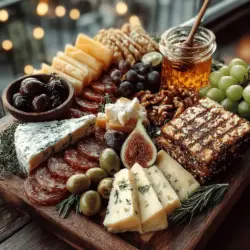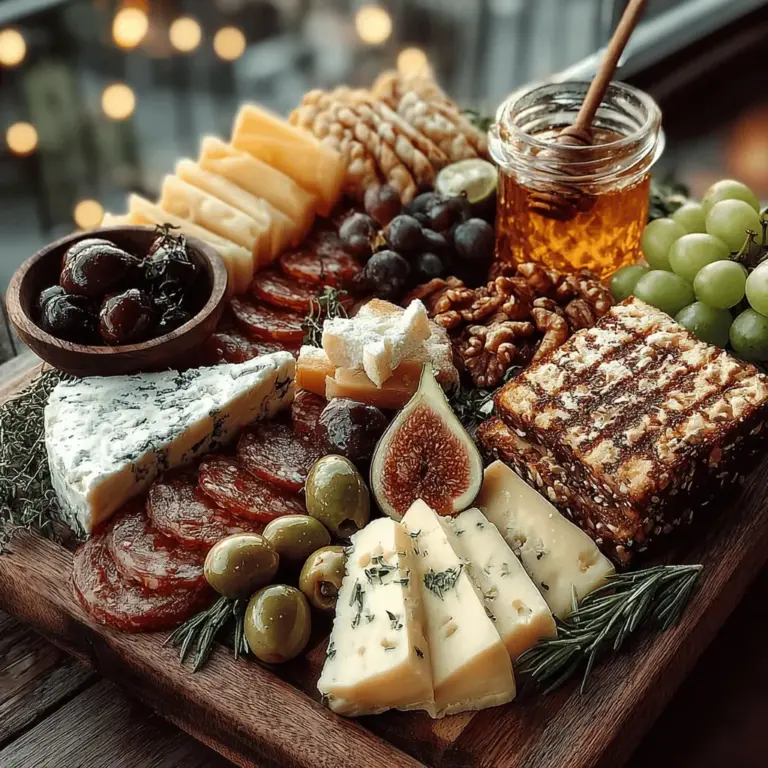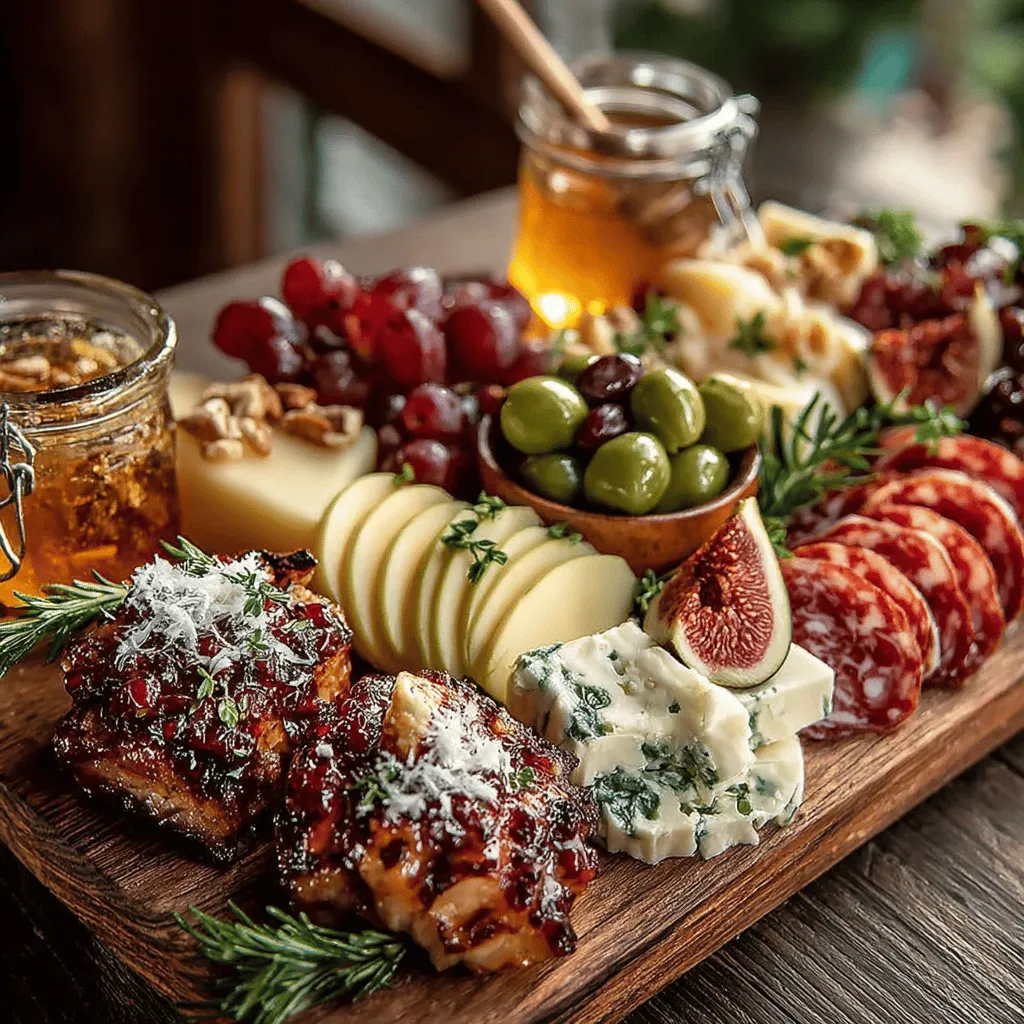Creating a Gourmet Charcuterie Delight: A Step-by-Step Guide to Crafting the Perfect Board
Introduction
In the world of entertaining, few things captivate the senses quite like a gourmet charcuterie board. With its vibrant colors, varied textures, and an array of delightful flavors, a charcuterie board is more than just a meal; it’s an experience that brings people together. This visually stunning centerpiece not only pleases the palate but also sparks conversation and creates a lively atmosphere at any gathering. Whether you’re hosting a casual get-together with friends, celebrating a special occasion, or simply indulging in a cozy night at home, a well-crafted charcuterie board can elevate your hosting game to new heights.
The art of assembling a gourmet charcuterie delight lies in the balance and variety of its components. This article will guide you through the process of creating an exquisite charcuterie board that features an assortment of cured meats, artisan cheeses, fresh fruits, and delectable accompaniments. From selecting the finest ingredients to arranging them in an appealing manner, you’ll learn how to create a board that is not only delicious but also a feast for the eyes.
Understanding Charcuterie: A Brief Overview
Before diving into the specifics of crafting your gourmet charcuterie delight, it’s essential to understand the roots and significance of charcuterie. The term “charcuterie” originates from 15th-century France, where it was used to describe the art of preparing cured meats and sausages. As culinary traditions evolved, so did the concept of charcuterie boards, which began incorporating a wider variety of ingredients beyond just meats. Today, charcuterie boards often feature a selection of cheeses, fruits, nuts, and spreads, making them a versatile choice for any occasion.
Historically, charcuterie was a method of preserving meat before the advent of refrigeration, with techniques such as curing, smoking, and salting being utilized to enhance flavor and extend shelf life. This practice not only spoke to the ingenuity of past generations but also laid the groundwork for the rich culinary traditions we enjoy today. The modern charcuterie board celebrates this heritage by bringing together an array of flavors and textures that reflect both traditional and contemporary tastes.
When assembling a charcuterie board, balance and variety are crucial. The goal is to create a harmonious combination of flavors that complement one another while also providing visual appeal. This means considering the saltiness of cured meats, the creaminess of cheeses, the sweetness of fruits, and the crunch of nuts, all while ensuring an inviting display.
Crafting Your Gourmet Charcuterie Delight
Now that you have a foundational understanding of charcuterie, it’s time to dive into the exciting process of crafting your gourmet charcuterie delight. Below is a detailed breakdown of the essential components and initial steps involved in creating a charcuterie board that will impress your guests and satisfy their taste buds.
Selecting Assorted Cured Meats
One of the most important aspects of any charcuterie board is the selection of cured meats. These meats not only provide rich flavors but also serve as a hearty base for your board. When choosing cured meats, consider popular options such as prosciutto, salami, and chorizo, each offering unique flavor profiles and textures.
– Prosciutto: This Italian dry-cured ham is known for its delicate, melt-in-your-mouth texture and savory taste. Its subtle sweetness pairs beautifully with a variety of accompaniments, making it a staple on charcuterie boards.
– Salami: Available in numerous varieties, salami is a cured sausage that is typically seasoned with spices and herbs. Its robust flavor and satisfying chew make it a favorite among charcuterie enthusiasts. Look for options like Genoa or Soppressata for a delightful range of tastes.
– Chorizo: This Spanish cured sausage is distinguished by its vibrant red color, thanks to the use of smoked paprika. Chorizo brings a smoky, spicy kick that can add depth to your charcuterie board.
When sourcing high-quality cured meats, consider visiting your local butcher or specialty grocery store. Look for products that are minimally processed, free from artificial additives, and sourced from reputable producers. Freshness is key, so opt for meats that have been recently sliced, as they will offer the best flavor and texture.
Choosing Artisan Cheeses
Cheese is another essential component of a gourmet charcuterie board, and selecting a diverse array of cheeses can enhance the overall experience. The importance of variety cannot be overstated; aim to include soft, semi-soft, and hard cheeses to create a balance of flavors and textures.
– Brie: This soft cheese is characterized by its creamy texture and mild flavor. Brie pairs wonderfully with fruits and nuts, making it a great addition to your board.
– Sharp Cheddar: Aged cheddar provides a bold, tangy profile that contrasts beautifully with the richness of cured meats. Its crumbly texture adds variety to the board.
– Blue Cheese: Known for its distinct flavor and blue veins, blue cheese offers a strong and pungent taste that can be polarizing, but it pairs exceptionally well with sweet accompaniments like honey or figs.
When selecting cheeses, consider how they will pair with the cured meats and other elements of your charcuterie board. A well-thought-out combination of flavors can create a delightful tasting experience for your guests.
Incorporating Olives and Mixed Nuts
To add even more complexity to your charcuterie board, consider incorporating olives and mixed nuts. These additions not only contribute flavor but also provide a delightful crunch that can enhance the overall experience.
– Olives: Including olives on your board is a fantastic way to introduce a briny element that balances the richness of meats and cheeses. Opt for a mix of green and Kalamata olives to provide a variety of tastes. Green olives tend to be firmer and more bitter, while Kalamata olives are softer and have a fruity flavor.
– Mixed Nuts: Choose a selection of mixed nuts to add texture and a savory crunch to your charcuterie board. Almonds, walnuts, and cashews can provide diverse flavors, while spiced or roasted nuts can elevate the taste even further. Be mindful of any guests with nut allergies and consider offering an alternative snack.
By thoughtfully combining these elements, you can create a charcuterie board that is both visually stunning and delicious.
Adding Fresh Fruits for a Burst of Color
The final step in crafting your gourmet charcuterie delight is incorporating fresh fruits. These colorful additions not only enhance the visual appeal of your board but also provide a refreshing contrast to the richness of cured meats and cheeses.
When selecting fresh fruits, consider those that offer a balance of sweetness and acidity, such as:
– Grapes: These bite-sized treats are a classic charcuterie addition, providing a juicy burst of sweetness that pairs well with both meats and cheeses.
– Berries: Strawberries, blueberries, and raspberries add vibrant color and a tart flavor that complements the other components of your board.
– Figs: Fresh figs, with their sweet and chewy texture, can be a luxurious addition that pairs beautifully with savory elements.
Incorporating fresh fruits not only enhances the flavor profile of your charcuterie board but also offers a healthy option for your guests. The contrast of colors and textures will make your board even more inviting.
As you embark on the journey of creating your gourmet charcuterie delight, consider each of these components carefully. The key is to balance flavors, textures, and colors to craft a board that is as delightful to the eye as it is to the palate. In the following sections, we will explore additional tips and tricks to elevate your charcuterie board to perfection, ensuring that your hosting skills shine through in every bite.


